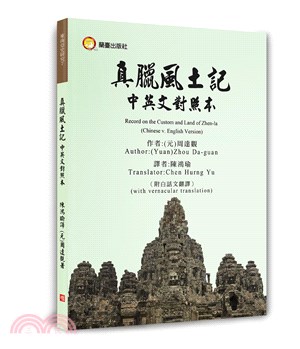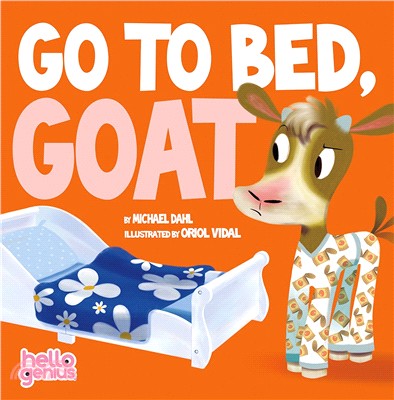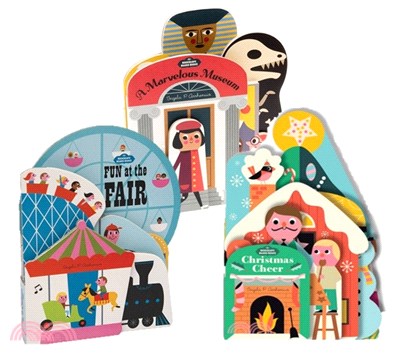商品簡介
周達觀在1296年8月奉元成宗之命出使到真臘(今之柬埔寨),他並非正式使節,而是以間諜身份前往刺探國情。他在柬埔寨居住10個月返國,將其所見所聞紀錄呈上報告,整理後出版成該書。
該書所記錄的柬埔寨的政治、經濟、社會和風俗習慣,極具歷史參考價值;特別是對吳哥寺之記錄,是為當今最早有關該寺廟的成文紀錄。該書因具有重要的歷史價值,先後被翻譯成數國文字。陳鴻瑜教授將該書譯成英文,俾有助於東西方文化交流。
Zhou Da-guan was sent to Chenla (now Cambodia) by Emperor Yuan Chengzong in August 1296. He was not an official envoy but went to pry on the national situation as a spy. After living in Cambodia for about ten months, he returned to China and submitted a report on what he saw and heard. The political, economic, social, and customs of Cambodia recorded in this book are of great historical reference value; especially the records of Angkor Wat are the earliest written records about this temple today. Because of its historical significance, this book has been translated into several languages. Professor Chen Hurng Yu translated the book into English to facilitate cultural exchanges between the East and the West.
作者簡介
陳鴻瑜
台灣花蓮市人
國立政治大學歷史系名譽教授
淡江大學外交與國際關係學系榮譽教授
學歷:國立政治大學政治系畢業
國立政治大學政治研究所碩士班、博士班畢業
國家法學博士(1978年)
美國喬治城大學訪問教授
新加坡東南亞研究院訪問教授
經歷:
淡江大學外交與國際關係學系教授(2017年1月31日退休)
淡江大學亞洲研究所教授
淡江大學東南亞研究所教授兼所長(2008年8月1日至2009年7月31日)
國立政治大學歷史系教授(2000年8月1日至2006年8月1日退休)
國立暨南國際大學教授兼東南亞研究中心主任(1995年8月1日至1998年7月31日)
國立暨南國際大學東南亞研究所教授兼所長(1997年8月1日至1998年7月31日)
國立政治大學國際關係研究中心研究員兼國際組召集人(1993年3月至1995年7月)
國立政治大學國際關係研究中心研究員兼國際組副召集人(1987年1月至1993年2月)
國立政治大學外交研究所、東亞研究所、中山人文社會科學研究所兼任教授
「問題與研究」月刊主編(1987年4月至1994年5月)
「東南亞季刊」發行人兼主編(1996年1月1日至1998年7月31日)
「戰略與國際研究」季刊主編(1998年8月至2000年4月)
中華民國海外華人研究學會理事長(1996年3月至2000年3月)
「海華與東南亞研究」季刊發行人兼主編(2001年1月至2004年12月)
Name: Hurng Yu, Chen (陳鴻瑜)
Current Position:
Emeritus Professor, Department of History, National Chengchi University, Taipei, Taiwan
Emeritus Professor, Department of Diplomacy and International Relations, Tamkang University
Education:PH.D, (in 1978) Graduate School of Political Science, National Chengchi University (in Taiwan)
Publications:
Political Development of the Philippines (1980)
Theory of Political Development (1982)
Sovereignty and International Conflict in South China Sea (1987)
Politics and Foreign Policy of the Southeast Asian Countries (1992)
A New Role of Taiwan In Asia-Pacific (1996)
Development of the Association of the Southeast Asian Nations (1997) Discovery, Development, and Conflict of the Islands in South China Sea (1997)
Political Democratization in Taiwan (2000)
Diplomatic Relationship between the Republic of China and Southeast Asian Nations (1912-2000),(2004)
Government and Politics in Southeast Asia (2006).
A History of Indonesia (2008)
A Modern History of Vietnam (2009)
A History of Singapore (2011)
A History of Cambodia (2015)
Compilation and Annotation of Historical Materials of the Relations between China and Southeast Asia before 1912 (2018)(4 Volumes) Territorial Sovereignty of Taiwan and Its Nearby Island (2018)
A History of Vietnam (2019)
East Asian Sea Routes and the Development of Civilization (2020)
Military Relations Between Taiwan and Southeast Asia During the Cold War(2022)
序
元朝人周達觀寫的書,直至一百多年後明朝才見世出版,以後也沒有引起多大的迴響。中國古籍也幾乎沒有有關吳哥王朝的建築物之記載和報導。這對於愛好文明的中國人而言,是很令人驚訝的事。
The book of Zhou Da-guan was written in the Yuan Dynasty, but it was not published until more than one hundred years later in the Ming Dynasty. Thereafter, this book did not arouse much widespread interest. Even those Chinese annals or other books scarcely mention the Angkor Kingdom’s architecture. It is a surprising thing for the Chinese who especially love civilization and culture.
西方人開始對吳哥城之注意,始於1819年法國人雷慕沙(Abel Rémusat)以法文翻譯真臘風土記,書名為中國旅行者在第十三世紀末訪問柬埔寨王國之描述(Description du royaume de Camboge [sic] par un voyageur chinois qui a visité cette contrée à la fin du XIIIe siècle)。法國自然學家毛哈特(Henri Mouhot)在1860年2-4月到吳哥寺進行測量神廟,1864年出版他的日記筆記,吳哥城才受到西方人的重視。1902年伯希和(Paul Pelliot)又將該書譯成法文(Mémoires sur les coutumes du Cambodge de Tcheou Ta-kouan)。1940年,日本外務省調查部譯編真臘風土記為日文。1951年,根據伯希和遺作整理出版的回顧周達觀的真臘風土記:伯希和遺作新編(Chen La Feng Tuchi, Mémoires sur les coutumes du Cambodge de Tcheou Ta-kouan / version nouvelle suivie d'un commentaire inachevé [par] Paul Pelliot)。1967年,J. Gilman d’Acry Paul根據伯希和1902年譯本翻譯成英文的真臘風土記註解(Notes on the Customs of Cambodia)。1971年柬埔寨人李添丁的真臘風土記柬文版在金邊出版。1989年,日本人和田久徳譯注真臘風土記:吳哥時期的柬埔寨(真臘風土記 : アンコール期のカンボジア)。
The Westerners began to pay attention to the Angkor architecture after the Frenchman Abel Rémusat translated Zhou’s book as Description du royaume de Camboge [sic] par un voyageur chinois qui a visité cette contrée à la fin du XIIIe siècle in 1819. Another French naturalist, Henri Mouhot, went to Angkor to survey temples from February to April 1860, and his diary was published in 1864. After that, the Angkor architecture became popular in Western society. Frenchman Paul Pelliot translated Zhou’s book as Mémoires sur les coutumes du Cambodge de Tcheou Ta-kouan. The Department of Investigation of the Ministry of Foreign Affairs of Japan translated Zhou’s book into a Japanese version in 1940. In 1951, the Paris bookstore Adrien-Maisonneuve published the Chen La Feng Tuchi, Mémoires sur les coutumes du Cambodge de Tcheou Ta-kouan / version nouvelle suivie d'un commentaire inachevé [par] Paul Pelliot. In 1967, J. Gilman d’Acry Paul utilized the 1902 version of Paul Pelliot’s book to publish the Notes on the Customs of Cambodia. A Cambodian, Ly Thong Teng, translated Zhou’s book into a Cambodian version. In 1989, a Japanese Hisada Wada translated and annotated Zhou’s book into a Japanese version.
第一本真臘風土記英文全譯本,是由Michael Smithies於2001年出版的柬埔寨風俗習慣(The Customs of Cambodia)。2006年,德國人Guido Keller翻譯出版德文版周達觀:柬埔寨的風俗習慣,第十三世紀吳哥的生活(Chou Ta-Kuan: Sitten in Kambodscha. Über das Leben in Angkor im 13. Jahrhundert)。2007年,紐西蘭人Peter Harris翻譯出版英文版真臘風土記(書名A Record of Cambodia: The Land and Its People)。2010年,柬埔寨人Solang Uk 和Beling Uk將該書譯成英文。2011年,越南人何萬丹(Hà, Văn Tấn)、潘輝黎(Phan, Huy Lê)和阮玉福(Nguyễn, Ngọc Phúc)將該書翻譯成越文。
The first complete English translation of Zhou’s book was The Customs of Cambodia which was translated and published by Michael Smithies in 2001. A German, Guido Keller, translated Zhou’s book as Chou Ta-Kuan: Sitten in Kambodscha. Über das Leben in Angkor im 13. Jahrhundert. Peter Harris, a New Zealander, who can read Chinese, translated Zhou’s book into English A Record of Cambodia: The Land and Its People in 2007. The Cambodian, Solang Uk, and Beling Uk translated Zhou’s book into an English version in 2010. The Vietnamese, Hà, Văn Tấn, Phan, Huy Lê and Nguyễn, Ngọc Phúc, translated Zhou’s book into a Vietnamese version in 2011.
以上英文翻譯家對於真臘風土記之翻譯,因為係非中文為母語語系的關係,還是有若干詞句翻譯有出入。因此,本人遂興起一股想譯出一本較為符合原意的英文版,俾讓西方讀者對該書內容有正確的理解。
All versions of the above English translations contain some translation mistakes probably due to Chinese not being the mother tongue of the translator. Thus I decided to create a more precise version of Zhou’s book in order to help Westerners to understand his book.
陳鴻瑜謹誌
Chen Hurng Yu
2023年5月4日
目次
譯者之導論(Translator’s Introduction ) 1
正文(Text) 17
總敍 17
General Preface 17
1.城廓 22
1.The City and Its Walls 22
2.宮室 30
2.Palace Housing 30
3.服飾 33
3.Dress 33
4.官屬 36
4.Bureaucrats 36
5.三教 37
5.Three Religions 37
6.人物 41
6.The People 41
7.產婦 45
7.Puerpera 45
8.室女 47
8.Unmarried Girl 48
9.奴婢 53
9.Slaves 53
10.語言 56
10.Language 56
11.野人 58
11.Barbarian 58
12.文字 59
12.Writing 59
13.正朔時序 61
13.New Year and the Sequence of Seasons 61
14.爭訟 65
14.Arbitration of Disputes 65
15.病癩 68
15.Illness and Leprosy 68
16.死亡 70
16.Death 70
17.耕種 71
17.Cultivation 71
18.山川 74
18.Mountains and Rivers 74
19.出產 75
19.Products 75
20.貿易 79
20.Trade 79
21.欲得唐貨 81
21.Desire for Tang Goods 81
22.草木 82
22. Flora .82
23.飛鳥 83
23.Flying Birds 83
24.走獸 84
24.Animals 84
25.蔬菜 85
25.Vegetables 85
26.魚龍 86
26.Fish and Reptiles 86
27.醖釀 87
27.Brewing 87
28.鹽醋醬麴 88
28.Salt, Vinegar, Sauce and Yeast 88
29.蠶桑 90
29.Silk Production 90
30.器用 91
30.Utensils 91
31.車轎 94
31.Carts and Palanquins 94
32.舟楫 98
32.Boats 98
33.屬郡 99
33.Local County 99
34.村落 100
34.Villages 100
35.取膽 100
35.Taking Out Gall 100
36.異事 102
36.Strange Things 102
37.澡浴 102
37.Bathing 102
38.流寓 104
38.Emigrant 104
39.軍馬 105
39.Troops 105
40.國主出入 106
40.The Lord In And Out Of the Palace 106
書摘/試閱
譯者之導論Translator’s Introduction
一、透過周達觀瞭解元朝與真臘的關係
1.To understand the relationship between the Yuan Dynasty and Zhen-la through Zhou Da-guan
周達觀是元世祖和元成宗統治中國時期的人物,他在1296年8月出使抵達真臘,今之柬埔寨,於1297年6月返國寫了真臘風土記一書,作為他的返國報告。周達觀在該著作的總敘中提及唆都元帥在攻打占城時,設置了征占城行省,他派遣一虎符萬戶、一金牌千戶到真臘招諭,但遭到拘執而沒有返國。因此,元成宗在1295年6月再度遣使到真臘招諭,周達觀為其隨從。
Zhou Da-guan was a person when the Yuan Dynasty emperors Shi-zu and Cheng-zung ruled China, arrived at Zhen-la in August 1296. Zhen-la is nowadays Cambodia. Zhou Da-guan returned to China in June 1297 and wrote a book: Record on the Custom and Land of Zhen-la. He mentioned in the general preface that Marshall Sordu set up a Conquer-Champa Moving-Province to attack Champa, and sent two generals to inform Zhen-la to send a mission to China, but both officials were captured and didn’t return. Therefore the Yuan emperor Cheng-zung sent another mission to Zhen-la in June 1295. Zhou Da-guan was in the retinue of this mission.
據上述記載來檢視元朝和真臘的關係。
According to the above historic record, we could review the relationships between the Yuan Dynasty and Zhen-la.
1280年,元朝出兵攻打占城,以占城國王孛由補剌者吾稱臣內附,命唆都就其國立占城行省撫之。1281年10月,元朝在占城設立「征占城行中書省」,準備海船百艘,新舊軍及水手合萬人,期以明年正月征海外諸番,除了要求占城給軍糧外,又遣使招諭干不昔(即真臘)來歸附, 但未獲回應。
In 1280, the Yuan Dynasty attacked Champa and repressed King Bor-yo-bu-la-jer-wu who surrendered to the Yuan. The Yuan Dynasty ordered Marshall Sordu to set up a Conquer-Champa Moving-Province to placate the local people.
In October 1281, the Yuan Dynasty set up a Conquer-Champa Moving Zhongshu Province and prepared hundreds of ships, new and old soldiers and sailors numbering over ten thousand, for conquering overseas foreign countries in the following January. Besides asking that Champa provide food and dispatch a mission to inform Gan-bu-shih (namely Zhen-la) to send a mission to China and submit their vassal status to China. But there was not any response from Zhen-la.
1282年6月,占城王子補的(或寫為補底)反抗元朝。10月,元朝命唆都、唐兀斛等領兵伐占城。10月,占城國王遣使稱臣內屬,遂命右丞索都等即其地立省,以撫安之。元朝為了攻打補的反抗軍,在12月遣使招真臘國使色哷默請往占城招諭,結果得知占城已做了戰爭的準備:「已脩木城,備甲兵,刻期請戰。」 因此占城和元朝雙方持續戰爭到1284年11月,占城才求和入貢。
In June 1282, Bu-de, the prince of Champa, fought against the Yuan Dynasty. In October, Marshall Sordu and Tang Yuan-hu again led the army to attack Champa. In October, the Champa king sent a mission to China and paid tribute. Marshall Sordu set up an Moving-province to placate the people. In order to attack the opposition forces of Bu-de, the Yuan Dynasty sent a mission to Zhen-la to ask their envoy Sir-le-mor to Champa, to persuade Champa to surrender to China. But Sir-le-mor delivered Champa’s answer: “Champa had already recovered the capital Mu-Chen (namely Vijaya), prepared its military, and was inviting a war with China.” Since then, both China and Champa fought continuingly up to November of 1284. Then, Champa asked for peace and paid the tribute to China.
儘管史書記載真臘和占城在1285年9月對中國貢樂工十人及藥材、鱷魚皮諸物。 但史書沒有記載為何真臘在此時向元朝進貢,一個最大可能是真臘商人載運藥材和鱷魚皮到中國進行貿易,而被寫為進貢。
Despite the historical annals recording Zhen-la and Champa paying tribute to ten musicians, medicinal herbs and crocodile skins, etc., to China in September 1285, that book didn’t mention the reason why both countries paid tribute to China at this time. It is probable that there were businessmen who brought goods to China to do business and that was wrongly written down as coming to offer tribute.
1292年7月,元朝出兵遠征爪哇,當時中書右丞阿里願自備船,同張存從征爪哇軍,他們在行抵占城時,被派往占城和甘不察招諭。忽必烈詔授阿里三珠虎符,張存一珠虎符。 甘不察就是柬埔寨之不同音譯。周達觀書中所講的兩使者到真臘沒有回國者,應是阿里和張存。周達觀的書說他們兩位是由征占城行省所派,其實是由征爪哇遠征軍到達占城時所派。
In July 1292, the Yuan dispatched military forces to attack Java. Right Prime Minister Ali voluntarily prepared himself ships to carry out an assault on Java with Chang Tshun. When the expedition army arrived at Champa, Ali, and Chang Tshun were sent to Champa and Gan-bu-tcha to demand both countries send their mission to China. Yuan Emperor Kublai Khan granted Ali a three-jewel Tiger Talisman and Chang Tshun a one-jewel Tiger Talisman. Gan-bu-tcha is the same name as Kampuchea. Zhou Da-guan’s book mentions the two envoys who were sent to Zhen-la and who did not return, but it does not mention they should be Ali and Chang Tshun. But both were sent by the Java Expedition forces which passed through Champa.
1292年,毯陽同沒剌予,亦遣使入朝。 據[民國]柯邵忞撰,新元史之記載,「元貞一年(1295年),淡洋一名毯陽,俗淳,男女椎髻,港口通貿易,有大溪之源,二千餘里奔流,合於海,其海水清淡,故名淡洋。」 淡洋,指柬埔寨的洞里薩湖(Tonle Sap Lake)。故淡洋即是指真臘(柬埔寨)。
In 1292, Tang-young and Me-la-yu sent a mission separately to China. According to Ker Sao-min’s book, A New History of Yuan: “In 1295, Dan-young had another name Tan-young, whose customs were very simple and sincere; the men and women tied a hair-knot on their head, there were trade ports and a very long river over two thousand li flowing along into the sea. Its seawater is light, so it is named Dan-young.” Dan-young refers to Tonle Sap Lake, thus it means Zhen-la.
外國使節,包括毯陽的使節到了1294年10月才允准回國,因為元朝出兵打爪哇,曾下令各國使節已到中國者,因「禁商泛海」而留他們在京師。
Not until October 1294 were the foreign envoys, including Tan-young, allowed to return home, because the Yuan Dynasty attacked Java, and thus ordered the prohibition of sea trade and going abroad. Therefore, the Yuan kept those foreign envoys in the capital of China.
「成宗元貞元年(1295)十一月丙戌,毯陽酋長之兄脫杭捧于奉金表來覲。」
In November 1295, the elder brother of Tan-young’s chief came to China and offered a golden paper to the Yuan emperor. After that, there were no offerings again.
從以上元史一書在短短15年間之記載可知,真臘有干不昔、甘不察、毯陽,甚至淡洋之不同名稱,足見當時史家對於該國不熟悉,才會出現如此分歧的國名。在該段時間,雖然真臘跟元朝尚有微弱的貿易關係,但其國王並未獲得元朝冊封,亦無固定的貢期,所以難以稱為元朝的朝貢國。因為真臘國王並未獲得元朝冊封,故周達觀記載其國王為國主。占城國王也是未經元朝冊封,一樣稱為國主。
From the above-mentioned book, A History of Yuan, we can understand that in a very short time of fifteen years, this book recorded the name of Zhen-la, including Gan-bu-shih, Gan-bu-tcha, and Tan-young, even Dan-young. The historians of that time really didn’t know Zhen-la. During that time, Zhen-la had very weak trade relations with the Yuan Dynasty, but the king didn’t get diplomatic recognition and did not receive canonization from the Yuan. Therefore Zhou Da-guan recorded Zhen-la’s King as Lord. Similarly, Champa’s king is also called Lord.
此外,該書最大疑點為,周達觀係隨從,但書中未提及正使為何人。有違過去史書撰寫習慣,中國歷代遣使都會在正史中記載正使和副使姓名。周達觀在書中僅記載真臘國王風采,但身為使節之隨從,卻未記載正式使節會見真臘國王之過程,誠令人不解和疑惑,因此很可能他為一般商人或是元朝派遣的間諜,目的在探查真臘的虛實,而偽稱為使節。
Besides, there is another big question, namely, Zhou Da-guan is part of a retinue, but he didn’t mention the names of the formal envoy and deputy envoy; that is against the custom of the Chinese historical books. Generally, it is necessary to record the names of envoys going to foreign countries. Zhou Da-guan recorded only the elegant demeanor of the King and never recorded the process of a formal envoy seeing the King. That is genuinely puzzling and doubtful. Based on this inference, it is probable that Zhou Da-guan was a businessman or engaged in espionage in order to investigate the national conditions of Zhen-la.
以後至元仁宗延祐七年(1320年)九月甲辰,元朝遣瑪薩曼(舊作馬札蠻)等使占城、真臘、龍牙門,索馴象。 雙方才又有來往。泰定二年(1325年),真臘遣使奉表進方物。 從上述簡史可知,柬埔寨和元朝關係冷淡。
After Zhou Da-guan’s mission, the Yuan Dynasty once again sent Ma-Sa-Man to Champa, Zhen-la, and the Lingga Islands, to request elephants in September 1320. China restored trade relations with Zhen-la. And Zhen-la dispatched a mission to give offerings to China in 1325. From this brief description, China and Zhen-la kept a very indifferent relationship.
周達觀在1297年6月搭船回國,8月12日抵寧波。他在回國後寫了真臘風土記報告。該書在明朝開始有刻本出版,因為傳抄的關係,而出現各種版本,雖大同而小異。本書係根據金榮華於1976年出版之真臘風土記校注之版本而譯為英文。
Zhou Da-guan returned to China in June 1297 and arrived at Ning-po on August 12. He wrote this book, which was not published in the Yuan Dynasty but in the Ming Dynasty. Because of differences in handwriting, this book has different versions. Whatever the versions are, they are quite similar in general but have differences in a few words only. I base my translation into English on the version of Jīn Rónghuá’s A Correction and Annotation of the Record on the Custom and Land of Zhen-la, published in 1976.
二、該書的歷史意義
2. Historical Meaning of this Book
在此書出版之前的年代,中國古籍對外國之記載,都是透過船員或旅人之口述記錄而成,本書最大的特點是作者親訪所見而寫出的。比該書還早出版70多年的趙汝适在1225年所撰的諸蕃志,是作者趙汝适擔任海關官員時從來往的船員口中所述記載而成,他自己本人並未親訪東南亞和南亞諸國。
Before the time this book was published, most of the Chinese books on foreign countries were written from the oral descriptions of sailors and tourists. The specific trait of Zhou’s book is that this is his own personal tour and observation. A book that was published earlier than Zhou’s book is Zhào Rǔgua’s Annals on the Various Barbarians, published in 1225. Zhào Rǔgua was a customs official who recorded the story of overseas voyages of sailors, but he had never by himself gone around to those foreign countries.
同樣地,中國文獻對於外國都是僅約略記載其種族和與中國的朝貢關係,對於內政和風俗都是三言兩語,除了越南之外。而本書則是詳細記載真臘的國情和風俗習慣,甚至日常生活都記載詳細。其間亦有記載怪誕的行為及加上他個人的想像和神話故事。如把這一部份除去,全書應有百分九十是可靠的。
Similarly, the race of foreign countries and their tribute relations with China were always recorded in most Chinese historical books. They simply briefly recorded their interior affairs and customs, except for Vietnam. Zhou’s book records comprehensively the national conditions, customs, and habits, even the daily life of the Zhen-la people. Among them, there are some weird parts that come from Zhou’s imagination. With the exception of those mythological stories, about ninety percent of this book is credible.
本書之所以受到各國之注意,而有數國之譯本,乃因該書是紀錄吳哥城最早的一本著作,連柬埔寨都無該城市寺廟建築的歷史文獻,故極具歷史價值。周達觀前往吾哥城的時間,剛好是吾哥王朝由盛轉衰的時候,它的建築物規模和數量應該也是到最高點。周達觀去的時候,真臘國王是英德拉瓦曼三世(Indravarman III,1295-1307),他是賈亞瓦曼八世(Jayavarman VIII)的女婿,在1295年發動政變取得政權。周達觀在他的著作中記載,英德拉瓦曼三世獲得他的妻子的協助,偷取國王的金劍,將陰謀政變的王子逮捕剁去其雙足而取得政權。
This book has received attention and has several different language translations; the important reason is this is the earliest book to record the Angkor architecture groups, for even in Cambodia there are no historical documents on the Angkor buildings. Zhou’s book has historic importance. When Zhou arrived at Angkor, it was the time the Angkor Empire was beginning to decline; its scale of buildings and numbers might have reached a peak. At the time when Zhou was staying at Zhen-la, the King was Indravarman III who was the son-in-law of Jayavarman VIII. King Indravarman III took power by coup in 1295. Zhou’s book recorded: “When his father-in-law died, his wife secretly stole the gold sword and gave it to her husband. Consequently, the son couldn’t succeed to the throne from his father. He tried to launch a coup, but the new Lord discovered it and chopped off his toes, and imprisoned him in a secluded room.”
賈亞瓦曼八世信奉濕婆神,也是偶像破壞者,他破壞或修改了許多佛陀造型。在巴揚的許多小佛廟被拆除,改為濕婆神廟。在英德拉瓦曼三世執政時期,小乘佛教成為真臘的國家宗教。 在他之後,吾哥城已沒有新建築。所以周達觀所看到的吾哥城建築,應該就是今天所看到的規模。
Jayavarman VIII believed in Shaivism and spoiled a lot of Buddha figures. He tore down many Buddhist temples in Bayon and changed them into Shaivism temples. But with the rule of Indravarman III, who believed in Hinayana Buddhism, it was even enacted as a national religion. After then, there was no new building in Angkor City, so the observations of Zhou should be the scale of what we see nowadays.
第二,該書對於國王主持朝政、宮廷裝飾和生活、出入乘轎輿、軍隊、一般百姓之日常家庭生活、服飾、婚姻、婦女生產、宗教、語言文字以及山川動植物出產等,都做了詳細和生動的描述。
Secondly, this book described comprehensively and vividly the King presiding over the affairs of state, the decoration of the palace and life in the palace, riding palanquins and carts, the troops, the daily life of ordinary people, clothing, marriage, giving birth to a baby, religion, languages and writing, mountains, rivers, animals, vegetables, products, etc.
第三,該書記載僧侶讀佛經是用貝葉疊成的經書。另又記載一件東南亞書寫史的重要紀錄,就是當時柬埔寨人已使用鹿皮作為書寫的工具,人們將鹿皮染成黑色,然後用白粉和水揉成細條,再將之畫在鹿皮上。在此之前,包括柬埔寨和其他東南亞地區都是使用貝多葉(棕櫚葉)書寫。印尼東爪哇和馬都拉島在第十二世紀初葉伊斯蘭教傳進之後,因為阿拉伯字母難以使用貝多葉書寫,故開始轉變使用木板、阿拉伯紙和中國紙。
Thirdly, this book recorded that the monks read Buddhist scriptures which were made from palm leaves combined into a book. On the other hand, this book also recorded a very important thing, that is, at that time the Cambodians used deer skin to write on. They tinted the deer skin to a black color, and then taking powder, like Chinese white chalk, fashioned the powder into a small stick which was used to write characters on the deer skin. Before this time, Cambodia and other Southeast Asian countries used generally palm leaves to write on. When Islam spread to east Java and Madura Island in the early twelfth century, because Arabic characters were difficult to write on the palm leaves, the people began to use boards, Arabic paper, or Chinese paper.
第四,很多遊客到泰國都知道泰國有人妖秀,已成為泰國吸引觀光客的重要景點。其實在1980年代以前,有人妖表演的國家有泰國、馬來西亞和新加坡。新加坡政府在1980年取締人妖表演,以致於新加坡已無人妖蹤跡。馬來西亞尚有,但不如泰國有名。人妖源自何國?有不同的說法。真臘風土記有所記載,該書說:「國中多有二形人,每日以十數成群,行於墟場間。常有招徠唐人之意,反有厚饋,可醜可惡。」換言之,男人扮成女人,成為「二形人」,常在市場招攬客人,他們形同阻街女郎。柬埔寨是「二形人」發源地,如今沒落,跟該國長期戰亂有關。
Fourthly, nowadays many tourists have a special experience in Thailand, that is, to watch a “shemale show”. It is scarcely recorded in books. Before the 1980s, there were “shemale shows” in Thailand, Malaysia, and Singapore. The government of Singapore prohibited the “shemale show” in 1980. There have been “shemale shows” in Malaysia, but not as famous as in Thailand. Which country is the origin of the “shemale”? There have been different arguments put forth. In Zhou’s book, I find a very interesting record, which said: “This country has a lot of two-appearance (a man playing a woman) people who form groups of ten or more persons and engage in business in the market. They are always enticing the Chinese men, even giving them generous feedback. Their behavior is shameful and disgusting.” I think these “two-appearance people” is the shemale. They solicit men for sexual transactions in the market. Until now, Cambodia has not used the “shemale show” to solicit tourists, for she has experienced continuingly the ravages of war.
第五,當時的柬埔寨流行三種宗教,周達觀雖寫為儒者(班詰)、僧者(苧姑)和道者(八思惟),其實班詰是指婆羅門教的婆羅門,苧姑是佛教之和尚,八思惟是印度教濕婆派之禁欲主義者。此正符合當時柬埔寨流行的三種宗教,惟小乘佛教日益興盛,其他兩種宗教則漸趨式微。
Fifthly, in Zhou’s era, there were three kinds of religions in Cambodia. Zhou Da-guan recorded that they included Ban-Jiea, Ju-Gu, and Ba-Si-Wei. Actually, Ban-Jiea refers to Brahma of Brahmanism, Ju-Gu refers to Buddhist monks, and Ba-Si-Wei refers to ascetics of Shaivism (Hinduism). Zhou’s book lets us understand that three kinds of religion existed at that time. Then Hinayana Buddhism was increasingly rising, and the other two religions were going into decline.
主題書展
更多書展今日66折
您曾經瀏覽過的商品
購物須知
為了保護您的權益,「三民網路書店」提供會員七日商品鑑賞期(收到商品為起始日)。
若要辦理退貨,請在商品鑑賞期內寄回,且商品必須是全新狀態與完整包裝(商品、附件、發票、隨貨贈品等)否則恕不接受退貨。














































